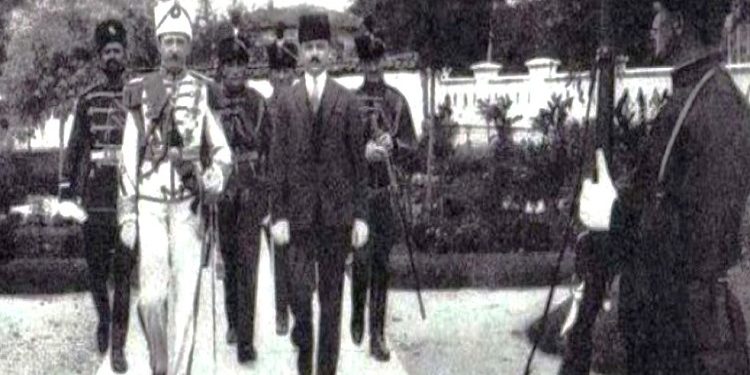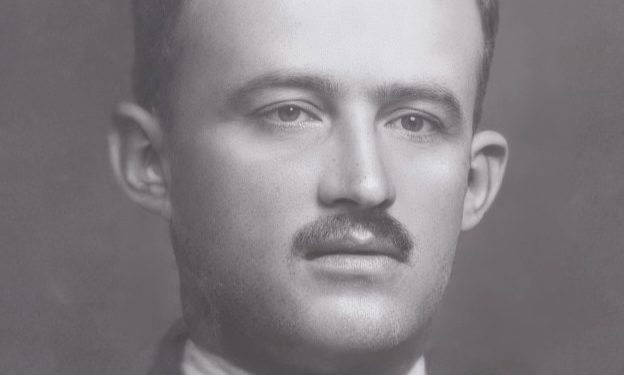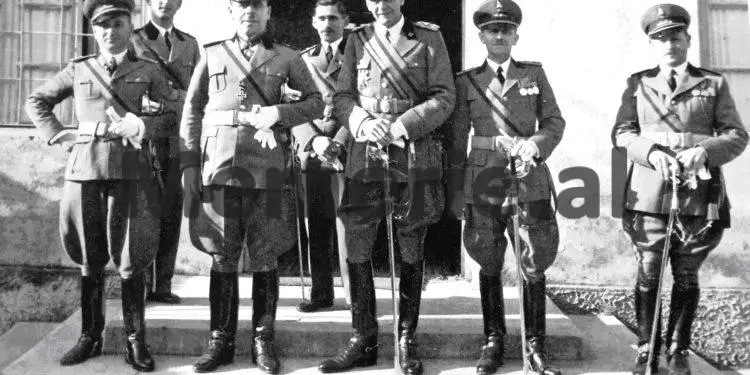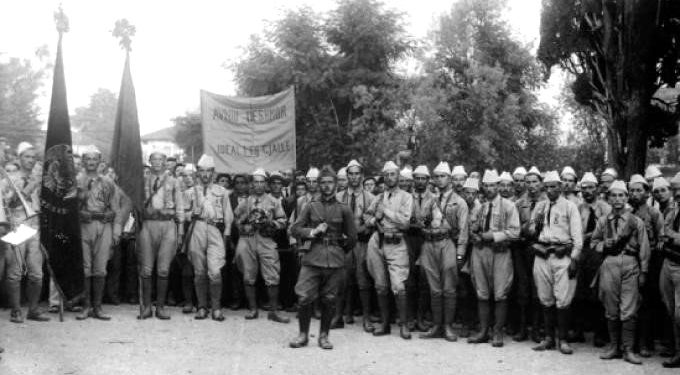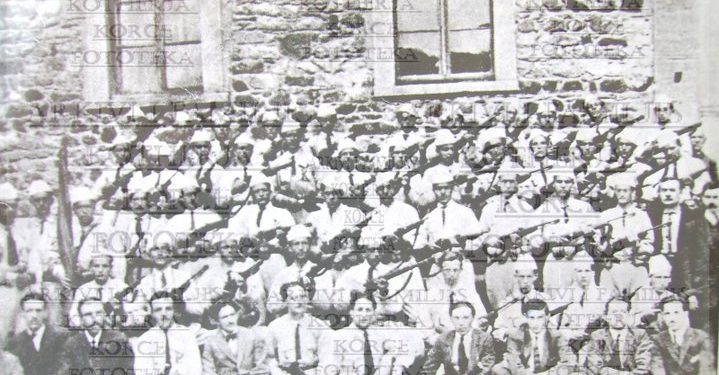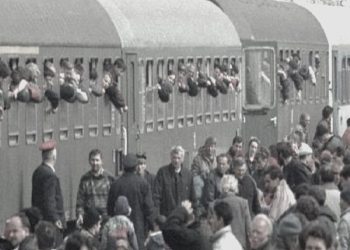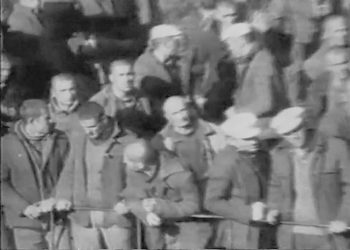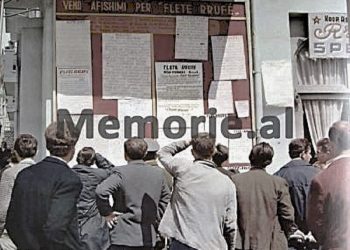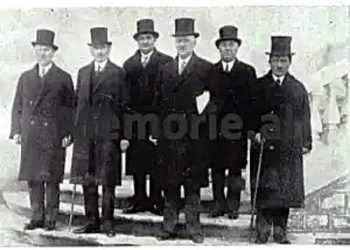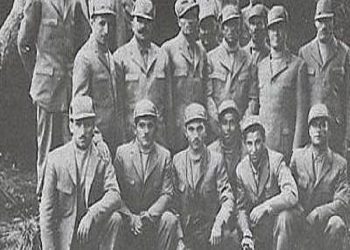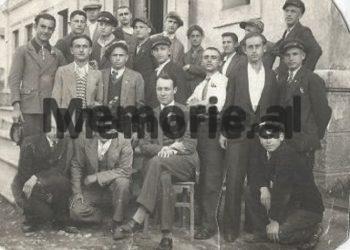By Ilirjan Gjika
Part Two
Memorie.al/In the period between the two World Wars, all Balkan countries were characterized by political instability and the struggle for power among various groups. For example, in Greece, a fierce conflict between republicans and monarchists lasted for more than a decade. Yugoslavia, on the other hand, experienced inter-ethnic clashes between the Serbian and Croat-Slovenian groups. Bulgaria and Romania saw confrontations between the left and the right. The situation in Albania was somewhat different. After the political instability of the 1920-1924 periods, during which 12 governments were changed, and the June Uprising of 1924, political stability was finally established. This stability continued throughout the years 1925-1939, a time known in our history as the period of Ahmet Zogu’s political leadership. During this phase, the Albanian state was consolidated for the first time in its life.
Continues from the previous issue
Here, the group of the “Secret Organization” consisted of Riza Vala, Pasho Hysi, Tahir Grepcka, Ramiz Spathara, and others. In addition to agitation and propaganda, it dealt with the organizational side of the upcoming uprising. To be as close as possible to the people and the terrain, in the last week of July, Riza Cerova moved from Tirana to Skrapar, accompanied by his comrade-in-arms Myrto Cerova (Belegu M., 1982: pg. 107).
Author Mane Nishova gives a different date for his movement. “After 41 days of returning from emigration, and being constantly under surveillance, on May 22, Riza Cerova left for his family in Skrapar,” he writes in the monograph “Riza Cerova” (Nishova M., 1971: pg. 92).
Based on the plan of the Skrapar group, which was also approved by the organization’s center in Tirana, the insurgents under the leadership of Riza Cerova would attack and take control of Berat. This would be made possible in cooperation with the group operating in that city, led by Seid Vrioni. After taking Berat, these forces would advance towards Lushnjë, and then continue the march towards Tirana (Belegu M., 1982: pg. 108-109).
Another step of this plan was that the insurgent forces should not initially attack the sub-prefecture center, Çorovodë. They would first secretly approach Berat, so as not to arouse suspicions that would lead to a reaction from government forces. After the capture of Berat, which was the prefecture center, the attack on Çorovodë would begin by forces led by Pasho Hysi (Belegu M., 1982: pg. 108).
According to this scheme, the insurgent actions began, with Riza Cerova gathering an armed group of 70 people, including Myrto Cerova, Ramiz Spathara, Riza Vala, Hudai Cerova, Tahir Hasani, Ali Cerova, and others. On the evening of August 13, 1935, the insurgents set off towards Berat, following the itinerary Spatharë-Vëndreshë-Therepel-Ustinjë-Valë-Lirëz.
Meanwhile, contrary to Riza Cerova’s planning, the authorities in Çorovodë began to act by notifying the Ministry of Internal Affairs (Belegu M: pg. 109-110). Sub-Prefect I. Dibra notified the Secret Office about the attacks that would take place in Tirana by the group of Skrapar men serving in the gendarmerie and the movements of Riza Cerova, writes the researcher Kastriot Dervishi in his book “Historia e Shtetit Shqiptar, 1912-2005“. The Secret Office had even infiltrated the informant E. Mollasi into Riza Cerova’s band, who reported about him. Later, the Prefect of Berat, Qazim Bodinaku, would request the cancellation of this person’s subpoena, as he had provided accurate information while risking his life (Dervishi K., 2006: pp. 350, 355).
In execution of its plan, the Skrapar band secretly positioned itself on the outskirts of Berat on the evening of August 14, 1935. Here, Riza Cerova learned that the “Secret Organization” group had withdrawn from the uprising and that the Fier group had been defeated in Lushnjë. Under these circumstances, he decided to withdraw and dispersed the insurgent group. Together with his seven most trusted comrades, they decided to flee to Yugoslavia, via Mali i Thatë.
Withdrawing into the country, his group was pursued by three detachments of gendarmerie forces dispatched from Berat and Skrapar, led by Veiz Xhindi, Jako Kumani, and Kamber Prishta (Nishova M., 1971: pg. 100). Another group, sent from Pogradec and led by Gjon Destanishta, tried to cut off their route (Belegu M., 1982: pp. 110-111).
To escape the pursuit, Riza Cerova’s group followed the itinerary: Tomorr Mountain-Kulmak-Zaloshnjë-Mazrekë (Opar)-Krosnishtë (Gorë)-Marjan (Gorë). Despite this, armed clashes accompanied them everywhere. In the final confrontation, Riza Cerova would die from his wounds in the early hours of the morning of August 25, in the forest of Marjani in Pogradec. Here, he would write a final letter to his family (Belegu M., 1982: pp. 110-111). His comrades Myrto Cerova and Ramiz Spathara met the same fate, being killed a few months later, on October 10, 1935. Meanwhile, other comrades like Riza Vala, Shuaip Hyseni, and Tahir Hasani were captured by government forces immediately after his killing (Belegu M., 1982: pp. 112-113).
His death was reflected in two different stances by the pro-government press in Albania and the political émigré press abroad. European media also wrote about this event, circulating the photograph of the slain Riza Cerova along with the description.
The Political Trial of Fier
As soon as the army battalions entered the city of Fier, their command declared a state of siege, taking control of all important points. The temporary administrative commission was dissolved, and arrests began. The special political court, established specifically for this case by royal decree, also began its activity. The chairman of the court was Ali Rizai, the commander of the operation. Its other members were: Major Hamza Kuçi, Captain Zef Prenushi, and judges Petro Martini and Sadri Faslliu. The prosecutor was Kiço Bisha, permanent prosecutor of the Special Court (Gazeta “Besa”, August 18, 1935).
The trial was conducted under a regime of terror, and various tortures were inflicted on the prisoners. “The Municipality, Qemal Vrioni’s houses, during those days were courtrooms and at night torture chambers; the post-telegraph office, Idris Bulo’s shops, the circle gendarmerie office and the post-command office, the ‘Plotore’ school of Fier in Bishanak, Ramis Omari’s hotel, and other premises, were prisons and torture chambers,” writes Xhelal Staravecka, a former participant in this uprising, in his memoirs years later (Staravecka Xh., 2012).
The first court session took place on the premises of the sub-prefecture and sentenced the first group, consisting of 21 gendarmes who participated in the uprising. Of these, 11 were sentenced to death and executed, while the others received various prison terms. Subsequently, the court moved the trials to the house of Qemal Bey Vrioni, who was one of those arrested. The other trials concerned the civilians who had taken part in the uprising (Emiri H., 2001: pp. 178-179).
539 people appeared in the Fier trial, of which 17 were political émigrés who were tried in absentia. Besides the execution of the eleven gendarmes, another 41 people were sentenced to death, whose sentence was changed to life imprisonment on the eve of execution due to international pressure. Of these, only Hekuran Maneku was executed in Fier by hanging, on September 23, 1935 (Belegu M., 1987: 136).
Among the convicted individuals were members of several well-known and influential families such as: Vrioni, Dibra, and Vlora. The court produced secondary evidence against these people. This evidence testified to a general dissatisfaction with the King, the government, and some empowered individuals such as the Minister of Internal Affairs Musa Juka, the Minister of War Xhemal Aranitasi, and Zog’s aide-de-camp, Abdurrahman Kroshi (Fischer, J. Bernd., 2004: pg. 256).
In addition to the other groups, the Skrapar group was also subjected to the Fier Political Trial. The trial for the participants in Riza Cerova’s band began on August 9, 1935 (Dervishi K., 2006: 357, pg. 359). Various sentences were handed down for them. The trial concluded on September 17, after working intensively for a month, leaving a climate of terror in Fier, which culminated on September 23 with the execution of Hekuran Maneku. He was one of the active participants in the uprising and was accused of killing Gilardi.
Due to the terrible tortures and the manly stance he maintained, Maneku attempted suicide by piercing his abdomen with a nail he found on the wall of his cell. As he was not provided with health care, the wound became infected. The doctor only visited him in his final moments and declared that his condition was hopeless. To escape discredit in the foreign press regarding the tortures used, the regime decided to execute him (Emiri H., 2001: pp. 178-180).
International Reaction and Amnesty
The harsh sentences of the Fier political trial severely damaged Albania’s international image. The tortures used on the participants led to a great reaction, ranging from the foreign press and international organizations, up to the League of Nations. Thus, one day before the closure of the trial, on September 16, 1935, the International Law Society sent the French lawyer, Stodel, to Tirana.
Almost all the well-known foreign newspapers, such as: “Times“, “Daily Telegraph“, “Le Petit Parisien“, “Le Figaro“, “Journal de Geneve“, “Pravda“, “Kathimerini“, “Vreme“, etc., wrote articles about this event (Belegu M., 1987: pp. 144, 147, 149). Various authors emphasize that the League of Nations devoted a special session to the issue of the mistreatment of the prisoners of the Fier Trial. Regarding this issue, the journalist and publicist Tajar Zavalani wrote in his book “Histori e Shqipnis” that: “The judicial drama of Fier had an unexpected echo in Europe. The League for Human Rights in Paris and other liberal organizations protested to the government in Tirana. The Council of the League of Nations, which was meeting at the time in Geneva, put pressure on the Albanian delegation not to carry out this legalized massacre” (Zavalani T., 1998: 290).
Nevertheless, international pressure forced King Zog, just two months later, on the anniversary of Independence, November 28, 1935, to declare an amnesty which pardoned a part of the convicts. This was followed on December 30 by a second amnesty, where another part of the convicts were released. With two subsequent amnesties in 1936 and 1937, the last convicts were also pardoned (Dervishi K., 2006: pp. 359-360).
The Fier Uprising was the most powerful expression of the dissatisfaction that existed in the country against King Zog. This movement seriously shook the regime, which was evident in the developments of the Fier political trial sessions and in the writings of the pro-government newspaper “Besa”. It was accompanied by the overthrow of the conservative government of Prime Minister Pandeli Evangjeli and its replacement with the new liberal and moderate government of Mehdi Frashëri.
Italian Involvement and the Aftermath
Meanwhile, there were claims that the Italian intelligence service also had a “hand” in the uprising. Naturally, the Italians were aware of the Secret Organization and the uprising, but they did not initially intervene in its developments. At this time, they were not interested in replacing Zog’s regime but in putting him in a difficult situation, specifically during the crisis in bilateral relations. However, in the summer of 1935, Italy was preoccupied with military preparations for the campaign to occupy Abyssinia in Africa.
Thus, Italy, whose agency exercised extensive activity in Albania, noted that a nationalist and anti-Italian spirit began to dominate the “Secret Organization”. Consequently, it advised its people to abandon the uprising, even to sabotage it at its starting point. This was one of the reasons for the failure of the Fier Uprising. Another cause in this regard was that the “Secret Organization” misjudged the political situation in the country, creating the idea that the regime would be artificially overthrown with the start of the revolt.
The subsequent fate of the participants and protagonists of this movement is also interesting. The events of the Second World War would determine their future. Thus, one part joined the anti-fascist resistance, some of whom fell as martyrs in the war. Others collaborated with the Italian and German occupiers. Meanwhile, another part was forced to emigrate after the war, were stripped of their property, or were imprisoned. Only a few became part of the elite during the communist period. / Memorie.al




